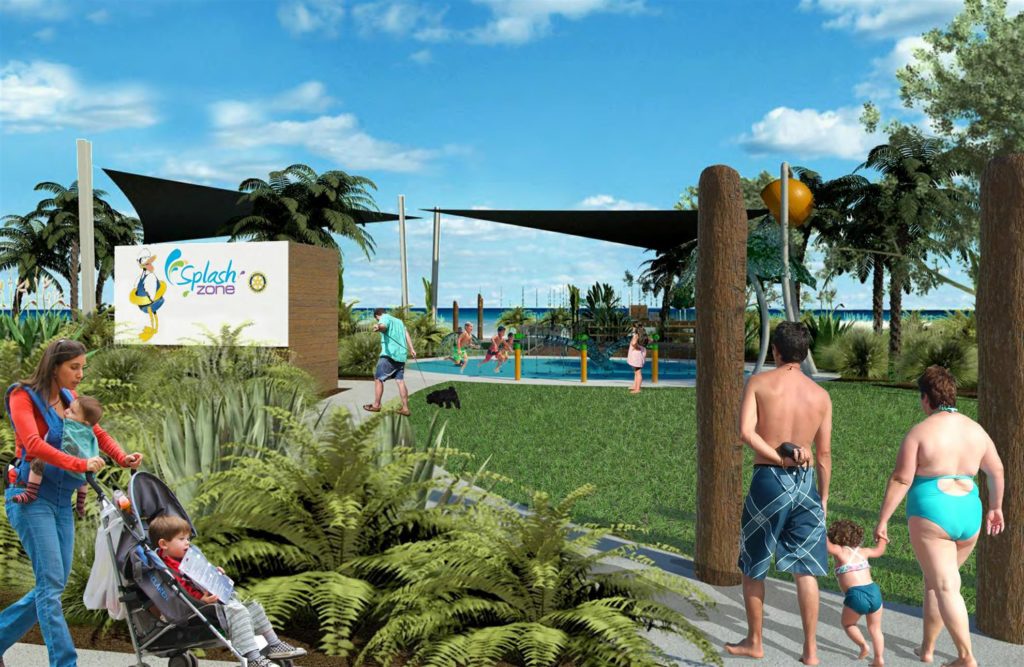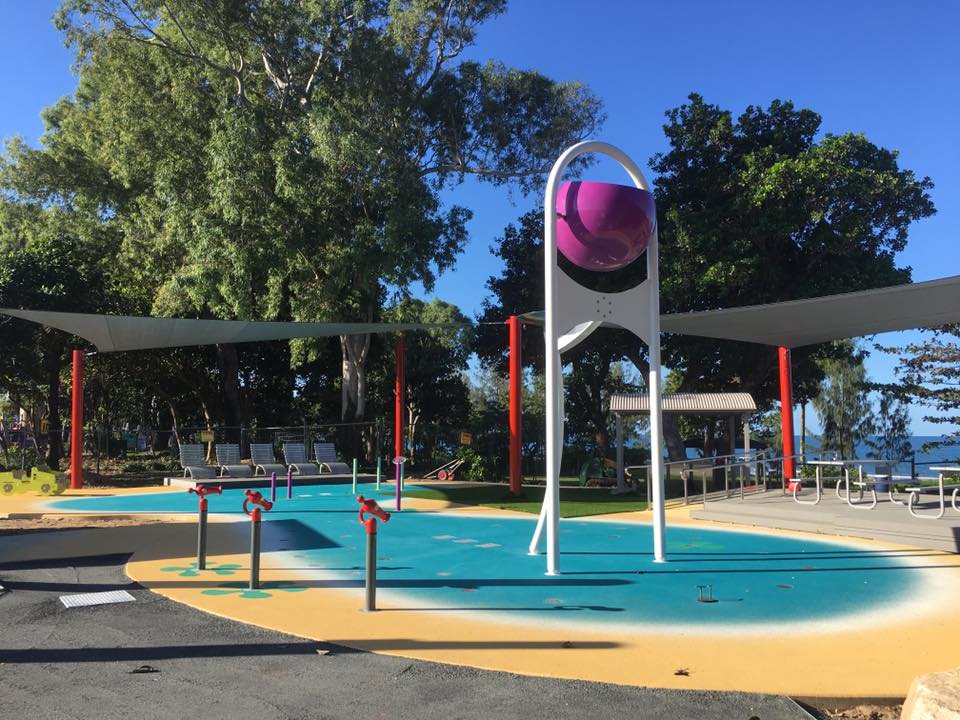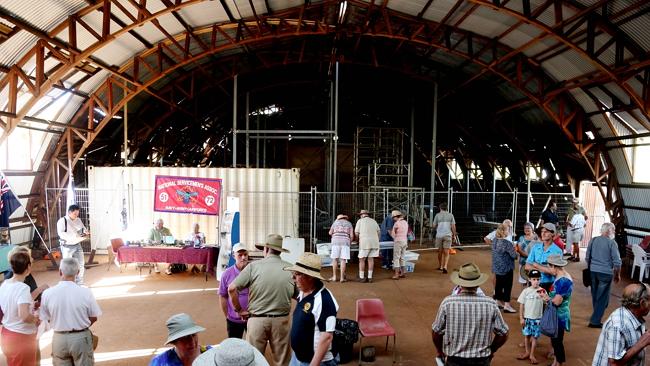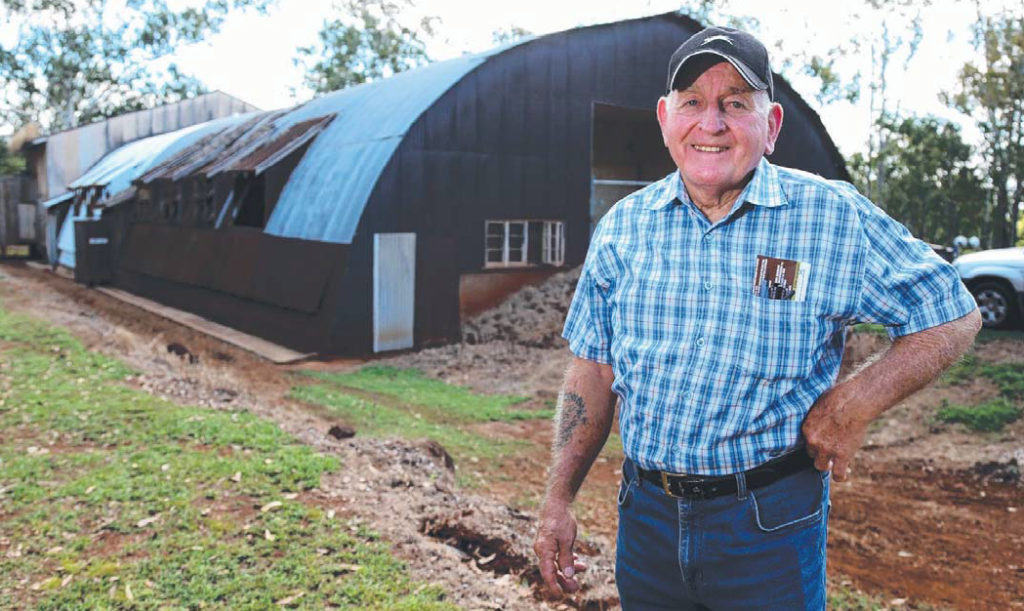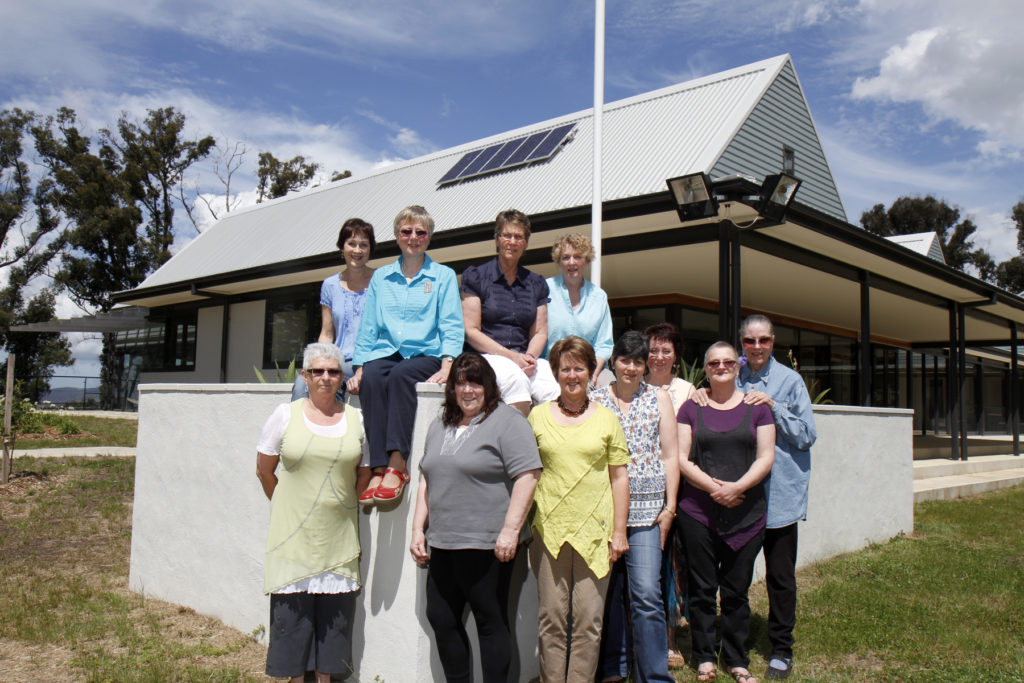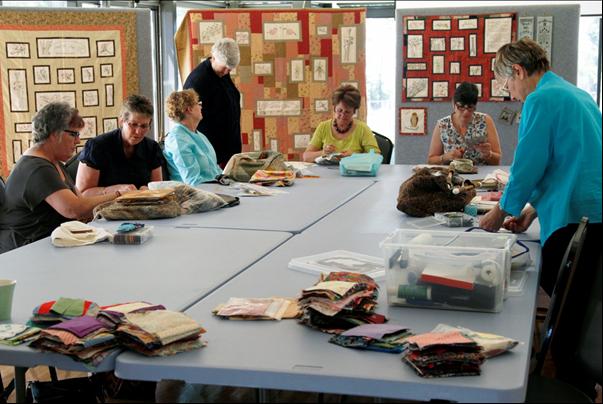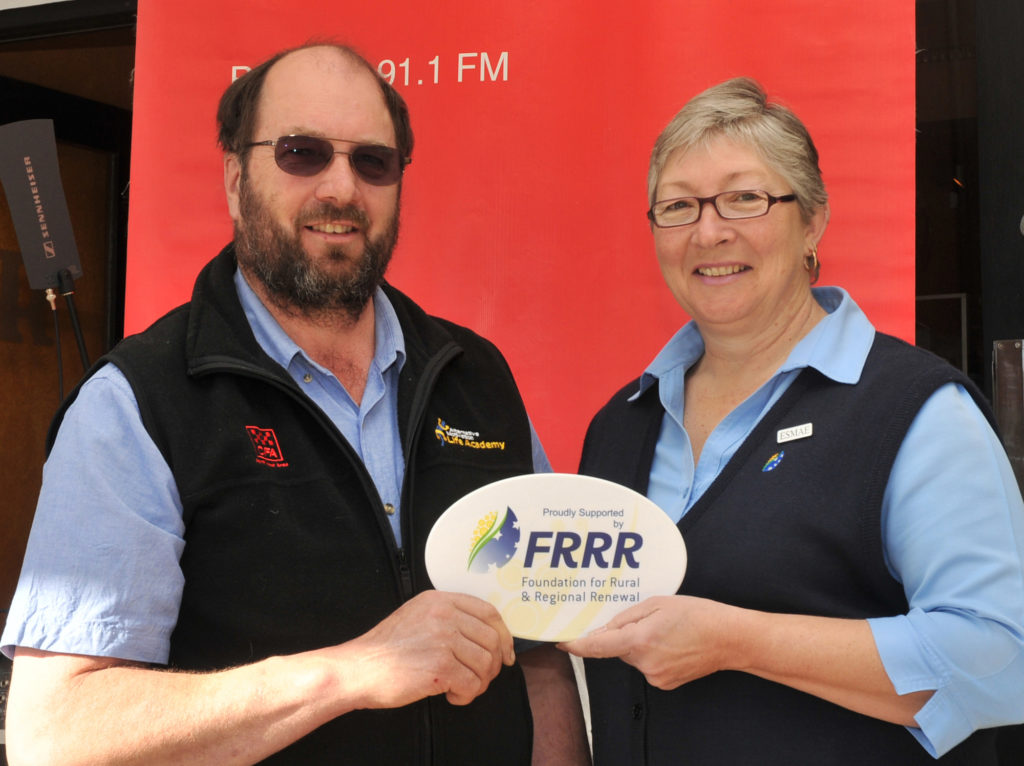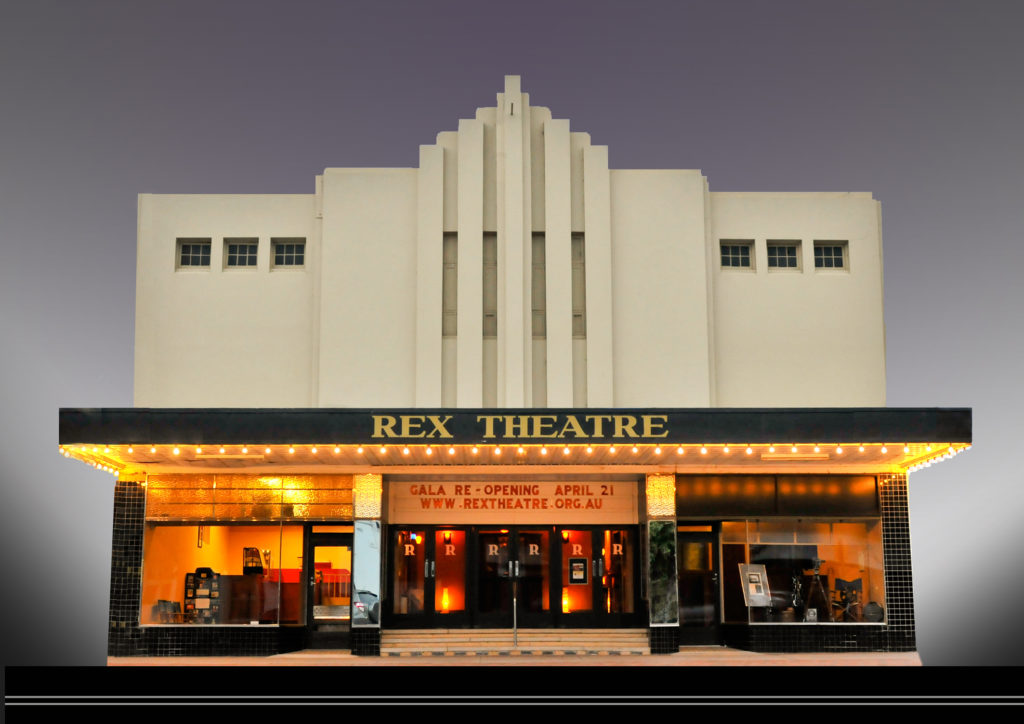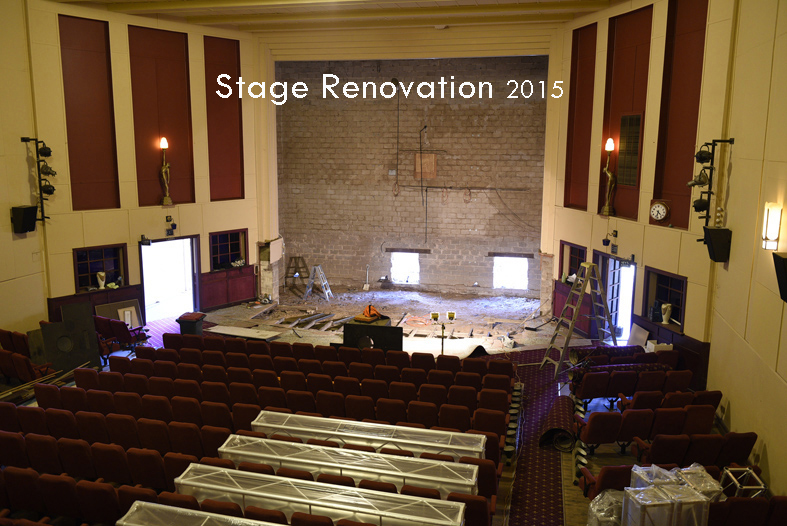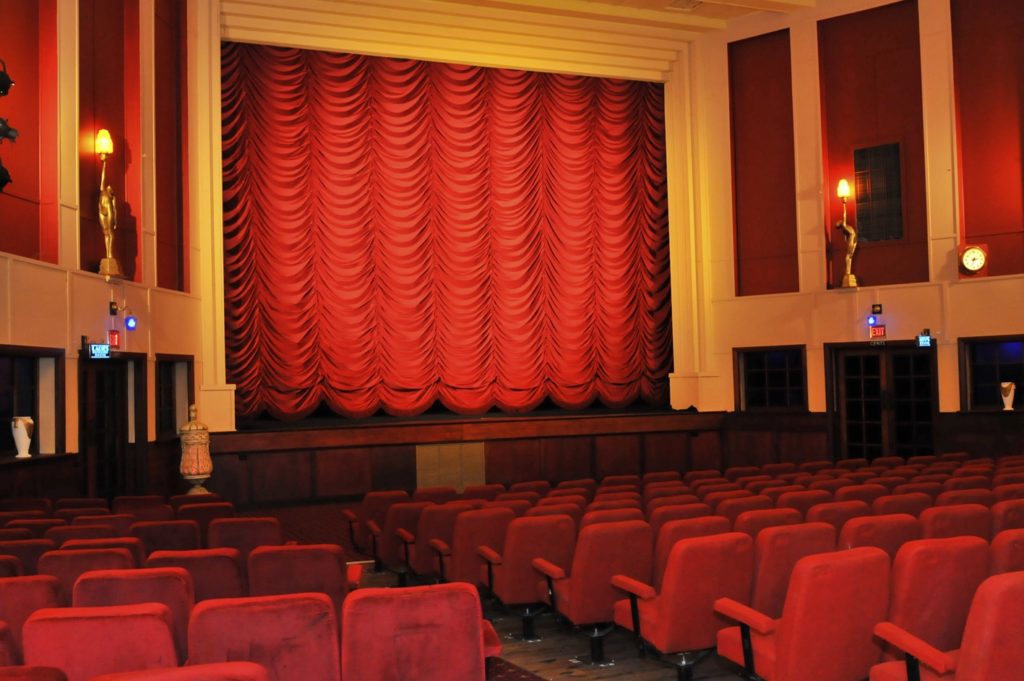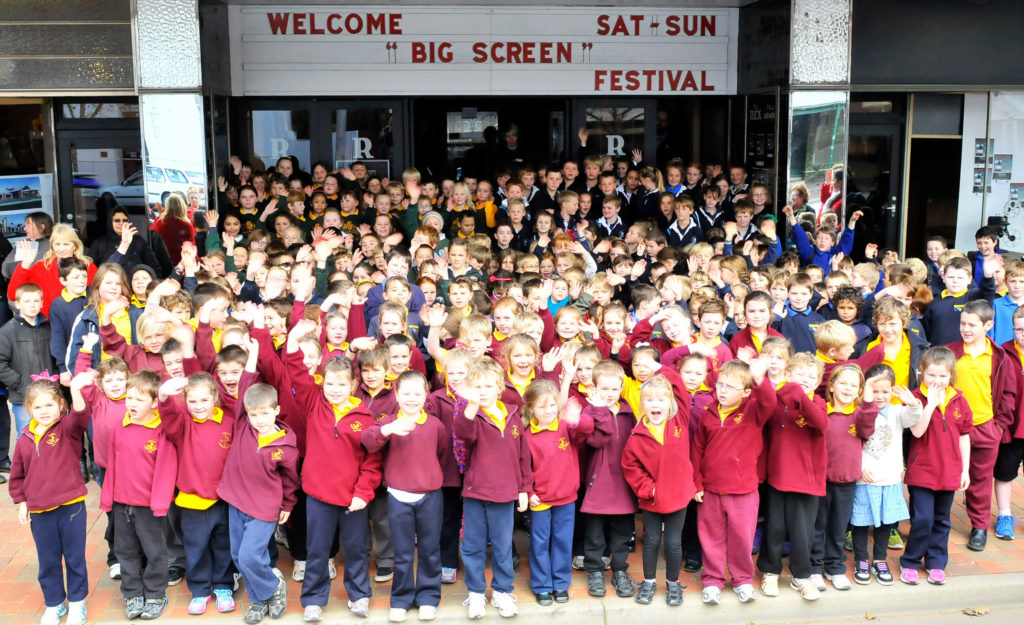Foundation for Rural & Regional Renewal (FRRR)
For the residents of Mission Beach in Queensland, there was a lack of safe water play facilities in the area, due to no community swimming pool and the presence of deadly marine stinging jellyfish in the local beach during the summer months.
The Rotary Water Park/Splash Pad project was developed to provide a special place for the children of Mission Beach to play with their families and friends. It would also offer an opportunity for visitors to experience the Water Park/Spray Pad facilities at the Mission Beach beachfront, bringing much-needed tourism to the area.
The project also was also a part of the Cyclone Yasi recovery initiative for Mission Beach. Yasi caused major destruction in the community in 2011. The Rotary Club of Mission Beach opened a Fundraising Account with FRRR in 2014 to enable keen sponsors to receive a tax deduction for any donations.
In December 2018, the Club reached their fundraising target and began construction early the following year. A project five years in the making has become a reality and been a huge success for the Mission beach community. You will now find the Water Park filled with families, with children enjoying the new water-play facilities.
One of the project managers who helped deliver the water park advises other community groups to “never give up”, as persistence was integral to their success.
The Mission Beach community await to see the impact of the Water Park on local tourism for the Summer holiday season but expect to see the same great outcome it has had for locals.
The provision of a fundraising account was just the boost the Atherton Rotary Club needed to give a historic military igloo built in the 1940s as part of the war in the Pacific.
The town of Atherton in the Tablelands Region, Far North Queensland and its surrounds were key in Australia’s World War II effort, the location of a major war cemetery, general hospitals, military camps and ordinance depots. Around 100,000 military personnel were stationed in the region at the height of the war in the Pacific between 1943 and 1945 as the Japanese threatened to invade Australia.
The igloo, built in 1943, provided an essential space for social activities hosting entertainment events for thousands of patients and staff from the neighbouring Rocky Creek Hospital. Six of the structures were built originally with the one in Atherton the last still standing.
Falling into disrepair, the Atherton Rotary Club drove a fundraising campaign, using the FRRR fundraising account and a $20,000 grant from the Culture, Arts, Tourism and Community Heritage(CATCH) grants program to restore the facility and create a military museum.
Getting the igloo to lock-up has been a major undertaking, with the funds contributing to dressing rooms for the theatre stage, lighting, emergency exits, major floor repairs including restumping, and a stainless-steel kitchen for the use of hirers in the future.
Jo Barnes from the Atherton Rotary Club said that the igloo’s revitalisation was a “great relief to Rotarians involved in what at first appeared to be a huge, maybe impossible, undertaking,” she said.
“The builders are proud of their achievement in bringing it together and having the opportunity to work on a building with so much local and Australian significance.” “Visitors are intrigued, excited and challenged to remember what their past relatives have said to them about being at Rocky Creek during the war.”
Geelong Grammar School’s Institute of Positive Education Project aims to share the
methodology of Positive Education throughout Australia and to encourage adults to
embed positive psychology tools fostering improved mental health and wellbeing in their
teaching, mentoring and rearing of children.
With an emphasis on improving the wellbeing of those living in rural and regional areas,
the Institute offers Positive Education training and collaborates on Positive Education
research projects. But this isn’t cheap. To raise the funds needed, they are working in
partnership with FRRR, through a Not-for-Profit Fundraising Account.
“The FRRR scheme has provided the Institute of Positive Education with invaluable
assistance towards the development and implementation of several programs and
services for regional schools and communities. These include supporting curriculum
writing, various wellbeing research measurements, and support for specialised training,”
said Wes Smith, Business Manager for the Institute of Positive Education.
“We are enormously grateful to be involved and to be a recipient of this vital funding initiative.”
The fundraising account will additionally work to support research and evaluation that
build scientific evidence for the efficacy of Positive Education.
Farmers for Climate Action know that the winds of change are upon farming in Australia – and want to do something about it.
Sid Plant is a fifth-generation cattle farmer in Darling Downs, Qld. It is an old family business and Sid intends to keep it that way for as long as possible.
Over the past five generations a lot has changed for farmers. There are the obvious things – the internet, better farming technology etc. But there is also climate change. Sid knows that if his father had done things exactly the same as his grandfather, and he had done the same as his great grandfather, they would no longer be in the cattle farming business. Science, technology and being open to new ways of doing things is essential. Which is why Sid is a passionate member of Farmers for Climate Action. He has studied climate change for many years so that he can engage with other Australian farmers about it – explaining to them the impacts on agriculture and their livelihoods whenever the chance arises.
Farmers for Climate Action is a not for profit organisation that works with farmers, scientists and other experts to find ways to make farming more sustainable in a world where climate change is having an impact on Australia’s agricultural industries.
FRRR’s Not-for-profit Fundraising account helps FCA achieve it’s goals
The Foundation for Rural & Regional Renewal and FCA have entered into a partnership to establish a not-for-profit fundraising account, for people who wish to donate to FRRR, obtain a tax deduction, and indicate that their preference is that their donation supports Farmers for Climate Action. This account is primarily concerned with the ‘scale up’ of Farmers for Climate Action, such as expanding their operations around Australia, hosting educational events, running fellowship programs, and spreading the word to ensure that Australian farmers can connect with experts and advocate for change to create sustainable farming practices that will serve Australians well for many years to come.
In the first seven months since commencing the partnership, FRRR granted out over $250,000 to FCA. FCA have encouraged donors to donate to FRRR, and have received hundreds of donations – ranging in size from $5.00 to large philanthropic sums. FCA CEO Verity Morgan-Schmidt says ‘without the support of FRRR through its Not-for-Profit fundraising account, we would not have been able to receive the same scale of funds from large philanthropic donors [who must give to a DGR-1 organisation] as we have. Being able to direct our supporters to donate to FRRR to receive a tax deductible receipt has widened our pool of prospective supporters.’
Through Farmers for Climate Action, Sid and his family have worked with leading scientists and researchers to pioneer new sustainable research practices to cope with climate change in their area. They have also assisted with revealing how to best apply climate science and forecasting to agricultural planning and risk management.
Farmers for Climate Action works across rural Australia to put those on the frontline of climate change front and centre in creating climate solutions. We’re building the capacity of farmers across Australia to understand and manage climate risks, transform our energy systems, restore carbon in natural and farming landscapes and adopt climate smart agriculture farming practices.
Recently, they raised money to send two young Australian farmers to a climate conference in Paris. Anika and Joshua travelled to Europe so they could learn about sustainable farming efforts around the world and bring the knowledge back to Australia’s farming community.
Without this work, farming in Australia is at serious risk. Climate change poses a huge threat to how our farmers and our farming communities operate, continue to support themselves, and continue to provide Australians with fresh produce.
Donate to Farmers for Climate Action.
Image credit: SBS (https://www.sbs.com.au/news/farmers-on-frontline-of-climate-change)
Pinery Fire response supported by Community Foundation Account
Foundation Barossa’s story is a particularly good example of how FRRR’s Community Foundation Accounts are able to help a community respond to emerging local needs quickly and efficiently. The account is flexible in the way that it can fundraise and grant funds, and direct funds toward a great variety of projects in the geographic area.

Incorporated in 2002, the Foundation was formed to fundraise and support local community projects, many of which are innovative and unique to the region. The Foundation runs an annual small Community Grants program, however many of the small not-for-profit organisations in the Barossa do not have DGR status. For this reason, Foundation Barossa opened an FRRR Community Foundation Account (formerly known as a Donation Account) to provide a way to streamline and increase the number of grants that could be allocated.
Located 50 km north-east of Adelaide, the region includes the major towns of Nuriootpa, Tanunda, Lyndoch and Angaston, and a number of smaller communities. The Foundation’s focus area for support is the sustainability of the Barossa’s environment and heritage, and the annual grants are a well-known and integral part ort of the community.
In 2015, the Foundation renewed their account – which had become inactive – to include fundraising to support fire relief and recovery after the Pinery Bushfire. The fire was devastating for the region – it burned from 25 November to 2 December 2015, destroying 91 houses, hospitalising 90 people and killing two.
With the help of FRRR’s DGR status, this Community Foundation has been able to fundraise for and support a great variety of wonderful community projects, including purchasing equipment for educational programs, upgrading vital community infrastructure, providing transport services for cancer patients, enabling garden revival projects, constructing memorials for the two local individuals who lost their lives, and publishing a book recording historical information from the area.
Below is a summary of projects that are being supported in the region through the granting of almost $50,000 via the Account.
Bushfire Garden Revival
The goal of SA Bushfire Garden Revivals is to assist as many impacted families to rebuild their home gardens as possible. Garden therapy offers significant health and wellbeing benefits and helps recovery from trauma, through both distraction for families and regeneration of land. Following the Pinery bushfire, the Samson Flat Garden Revival team restructured their project to assist any South Australian bushfire event, quadrupled their team, and grew rapidly with a new focus on assisting Pinery families.
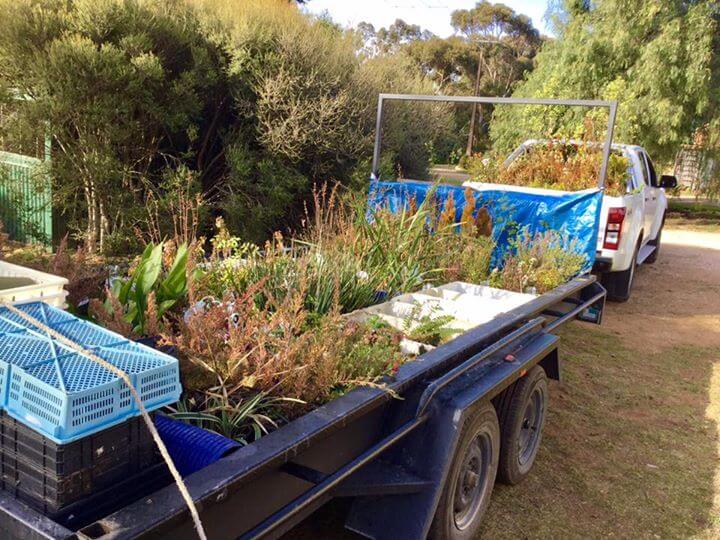 |
They went from 3 collection points for donations to 11 around the State. Funds are used to purchase garden items such as tools, greenhouses, garden statues, native plants, fruit trees and citrus trees. The number of families who lost their home gardens is far greater than the number of homes lost overall, and gardens are mostly uninsured and impossible to put a dollar value on. Through providing assistance, plants and garden items to fire affected families, the SA Bushfire Garden Revival team hopes to share their experience in garden therapy and horticulture to assist them to rebuild their home gardens with colour, love and life.
The Barossa – From Federation to the Fifties
 |
The Regional Heritage Network was granted funds to coordinate a publication of the book ‘The Barossa – From Federation to the Fifties’. Local historians formed a working group to write the book, which will be a companion volume to the successful 1992 publication The Barossa – A Vision Realised, which focused on the settlement history from 1839 to 1900. The next 50 years – from 1901 to 1950 – outlines the progress of the Barossa region, the people and its culture. It is to be published in October 2017 to commemorate the 175th anniversary of settlement in Angaston and Bethany and other townships over the next ten years.
iPads as sensory tools for behaviour management in special needs kids
The Barossa Outside School Hours Care Service wanted to ensure that they are accommodating for the high level needs of special needs children in their care. The two iPads that were purchased – one at each of their sites in Nuriootpa and Tanunda – will be used as sensory tools to enhance communication with non-verbal autistic children. The iPads can also be used for managing high-level behaviours in children that are a safety risk to themselves and others, and require distraction and calm down time.
A seat for Janet
Hamley Bridge Community Association was supported with funds to construct a memorial piece to commemorate the life of Janet Hughes, a community-focused, caring individual who was one of two people who perished in the Pinery fire storm on 25 November, 2015. Janet had opened up the Hamley Bridge Institute on the day of the Pinery fire storm to give refuge to community members who were looking for a safe haven, before becoming trapped in her car. A mosaic reflection bench in Janet’s favourite colour is to be erected to acknowledge and respect Janet’s selfless actions that showed her community spirit. You can find a video of the community’s involvement in the project here.
 |
Landscape Greening Project
The Owen Uniting Church’s Landscape Greening project will provide $100 vouchers to a local garden centre for the families who had gardens burnt but were lucky enough to save their homes. Members of the church are distributing the vouchers personally, first visiting homes in the reguib the fire started, and moving east as money is raised for further vouchers. This small gesture will enable fire-affected families to purchase tools, native plants and trees to rejuvenate their destroyed garden areas and provide hope, new life and distraction, literally in their backyards.
Wasleys Supper Hall
The recently renovated / refurbished Wasleys Supper Hall has been an invaluable community asset since the Pinery Fire. It was used as the local Recovery Centre immediately following the fire, assisting those from Wasleys and District. It provided access to physical goods (food, clothing, bedding, crockery, cutlery etc) and also provided a space for people to come and have a cup of tea and a chat if that’s what they needed. The Supper Hall is also used on a regular basis by lots of local groups including Creative Chatters (a group that was formed post-fire to assist mainly women from the fire region), and by the Wasleys Community Group Inc for meetings. The Hall is hired out privately on ad hoc occasions.
 |
As the Supper Hall has no heating or cooling, it is extremely cold during the cooler months and very hot during the warmer months. The Community Foundation Account is supporting the installation of reverse cycle air conditioning to make the space much more comfortable and even more attractive to users.
Cancer patients’ ‘Butterfly Car’
The Barossa Area Fundraisers for Cancer were supported by the Community Foundation to provide signage and decoration for their cancer patient transportation – the Butterfly Car. The butterfly decoration gives it great visibility and the vehicle is well recognised. This important community service stepped in to cover the total cost of transport for patients on their way to hospital for treatment, after a government subsidy for this transport ceased.
Owen Men’s Shed and Alan Tiller Memorial
The Owen Men’s Shed began construction in October 2015, and completion of the shed itself was just prior to the Pinery Fires occurring in November 2015. Alan Tiller was one of the men instrumental in both the building of the shed and the development of the organisation in Owen. Alan lost his life battling the blaze in the Pinery fire.
There are around 15 members of the Owen Men’s Shed from communities that have been impacted by the fires. The Foundation is supporting upgrades to the current shed, including stormwater connection, equipment and materials for projects, as well as a memorial for Alan Tiller.
Freeling School Mosaic
Following the Pinery fire, staff and students at Freeling Primary School devised a project to create a series of mosaics with images celebrating the Freeling Community. The project would involve staff, interested students and members of the community. This project will help the students to move on from the bushfires and heal through creativity.
Bower is a town in South Australia, approximately half way between Eudunda and Morgan on the Thiele Highway, 130 km north west of Adelaide. For a small community it has a huge heart, led by the Bower Progress Association, which is committed to improving community facilities.
To assist them in their long-term endeavours, the Progress Association established a Project Donation Account with FRRR in 2008. Back then, they came to us with a very ambitious wish-list, the length of which was matched only by their determination. The focus was on improving facilities at the Bower recreation reserve to create a welcoming gathering place for locals and visitors alike.
Ambitious plans matched with determination
We reported on their progress in our 2013 Annual Review, with their list of successes including:
- upgrading the power supply, with solar support (completed 2009);
- constructing an all-weather BBQ area (completed 2010);
- installing a fence along the boundary between the neighbouring commercial dog kennels (completed 2012);
- purchasing and improving the services of the local postal agency (completed 2013);
- installing additional rainwater tanks (completed 2013);
- obtaining accreditation as a registered RV campsite and completing the necessary associated infrastructure works (completed 2013);
So they are well on their way to ticking off the things that were on their list back in 2008. And the most recent update confirms this dynamic group is still on track.
Community engagement and connectedness increase
In January they reported that they have now undertaken ongoing stabilisation works to the reserve site, purchased and installed more parcel lockers at the postal agency, installed air conditioning throughout the hall (also replacing the unit in the kitchen that was originally funded by an FRRR grant in 2008), and researched early settlement history with a view to installing a pioneers’ memorial and flagpole.
There is no doubt that the improvements at the Recreation Reserve are benefitting the community, and enhancing its connectedness.
Nick Manos, who is on the management committee, said that the increased engagement by community members was a positive and exciting outcome of improving the community facilities.
“This year we’ve seen a number of social activities held at the recreation reserve. Our greatest social, cultural and welfare success to date is our Yack ‘n’ Snack event which continued during the last six months. New volunteers have ensured its continuation for 2015 and hopefully beyond,“ Mr Manos said.
“We’ve also seen the first wedding reception in living memory at Bower, thanks to the upgraded premises and loyalty of the locals. And in December we hosted 130 people at our Annual Christmas party / BBQ. Even though the weather was hot, the event was most successful from personal, social and financial perspectives.”
In addition to offering grants, FRRR also helps local community organisations fundraise, by ‘lending’ our tax deductible status. We do this by hosting a Donation Account, which enables the receipt of tax-deductible donations on behalf of a specific group or cause. Deductible Gift Recipient (DGR) status is often a great incentive to those willing to donate, and therefore it helps communities fundraise more quickly.
Over the years, Fundraising Accounts, formerly known as Donation Accounts, have helped many groups in rural and regional Australia with their work in natural disaster recovery, especially where they are large and daunting projects.
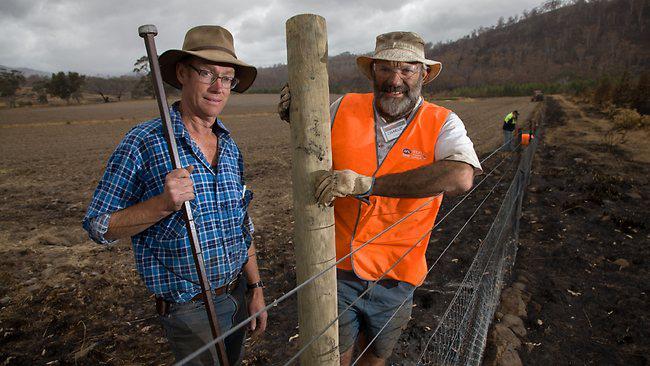
One such group, which we profiled in our last Annual Review, is BlazeAid. They coordinate the efforts of volunteers to support farmers and residents impacted by natural disasters. Not only do they help to build fences and repair infrastructure, but they also restore the spirits of natural disaster survivors who may have lost family and friends, pets, stock, homes and property.
The donation account helps them raise funds to do this work, by providing tax deductible status to their donors.
BlazeAid’s remarkable achievements
Since we published the Annual Review, we’ve received an update from BlazeAid, with some truly remarkable statistics about what they achieved in 2014:
- 1,397 volunteers contributed 14,671 volunteer days building and repairing fences and stock yards, cleaning and painting homes and shearers’ quarters, carpentry, mechanical and whitegood repairs, caretaking and helping with childcare and home education.
- Assisted 513 properties across Victoria, South Australia and Queensland fire and drought affected areas.
- More than 50% of their operational expenses relate to catering and fuel costs, a significant portion of which is in relation to their Drought Relief work in Queensland, where volunteers travelled long distances, and were self-sufficient with meals.
Tax deductible status attracts donors
We wanted to share this story to highlight to other groups that may be faced with recovering from some of the recent natural disasters across the country that a Fundraising Account could make a difference to your ability to fundraise to get things back up and running.
For donors, it’s also a great way to channel your support directly to areas in need, while also receiving the tax deduction.
Following the devastating flood that ripped through the Lockyer Valley in 2011, the Lockyer Valley Regional Council established an FRRR Regional Donation Account as a fundraising avenue to address a number of community priorities as the recovery process began.
It didn’t take long for the Regional Donation Account to have a rather healthy balance, thanks to donations made from local businesses, community members and access to philanthropic grants, and the benefits to the community have been immense. One project in particular that has been funded from the Donation Account has been a targeted weed eradication program to preserve farming and grazing land. The seeds of weeds washed down in floodwaters has triggered an infestation throughout the Lockyer Valley, particularly of the declared Parthenium weed.
Donation Account funds community projects
Under the Land Protection Act (2002) landowners are required to control pest animals and plants on their property. Most control methods for pest plants employ the use of spray equipment. The LVRC recognised that not all landholders have ownership of herbicide spray equipment and established the Community Herbicide Spray Equipment Program to assist landowners to eradicate declared weeds.
Funds from the Donation Account have been used for the purchase of herbicide chemical and the construction of three purpose built weed spray trailers, which landholders are now able to borrow (free of charge, with a bond) to assist in the control of weeds on their properties.
Practical support invaluable as community continues recovery
This type of practical support to assist landholders with the large task of weed management is aiding struggling communities to focus upon further tasks within the huge, costly and demanding task of rebuilding following the 2010/2011 flood event. It takes up to 10 years for communities to recovery from a natural disaster – the weed project fours years on is testament to the marathon efforts of the Lockyer Valley community.
The Callignee Community Hall is now benefitting from the installation of a number of cupboards that have improved the overall utility of the available storage space in the Callignee Hall, thanks to a dedicated and determined group of women.
The Callignee Stitch & Chat group was formed in May 2009 as a response to a need for community groups to provide opportunities for local women to gather together after the bushfires. It created a socially and emotionally supportive environment where women could share experiences while participating in craftwork. Stitch & Chat now has a day group with 18 regular attendees and an evening group with 10, and numbers are still increasing.
Stitch & Chat also functions as a forwarding service for items of community interest, government and other assistance programs, and other items of interest to the community. It is a conduit for discussion of local issues and for providing feedback to government authorities. Another craft group concentrating on card making has also grown from the group. At the present time the group is run by a Volunteer Coordinator and plans to become incorporated in the next 12 months to ensure its sustainability.
A Victorian Bushfire Regional Donation Account was set up in 2009 by Rotary International using FRRR’s DGR status, and funding of $5000 was granted to the Callignee Community Hall Committee Inc in May 2012 to support the Callignee Stitch & Chat group to purchase five two-door and one single door freestanding cupboard units and multiple storage containers. The cupboards have shelving and divisions that have allowed the group to organise their equipment, which they have worked together to sort, categorise and label to ensure it is now easily located and neatly stored. Their equipment, which includes books, magazines, patterns, patchwork and embroidery supplies, sewing machines and overlockers, was previously stored in a communal area in 50 litre plastic tubs stacked five high, creating quite a safety hazard.
With materials now sorted and readily accessible, the group has increased productivity and successfully completed a number of community projects including:
- 12 quilts for donation to charity and support groups;
- 12 knitted shawls donated to aged care facilities in the region;
- 20 knitted beanies for inclusion in Police ‘comfort bags’ for presentation to children who have been removed from their family environment for various reasons;
- 13 patchwork bags presented to victims of the Queensland floods; and
- Work is underway on oven mitts for the victims of the Tasmanian fires.
With their materials and equipment organised and easily accessible, the group can now focus on their crafty productivity.
Ken Jones, Chair of Rex Theatre Charlton, believes the recent history of Charlton’s Rex Theatre would make an ideal movie script in itself:
“…old cinema saved by community during harsh drought, experiences renaissance in interest and support, only to succumb to abrupt closure resulting from damage inflicted by two successive major floods. There is drama, heartache, uncertainty – is there a future for the historic building?”
There certainly is a future, and a story, made possible by the resilience of the Board, the volunteers who operate this community owned venue, and the extended community across Victoria who have helped this theatre into its new era.
On the night of 14 January 2011, the Rex had over one metre of water flow through the building. Flooring, carpet, wiring, the piano, the stage and the seating were all badly damaged. While the giant clean up efforts were under way, Scouts Victoria got involved and tried to revive community spirits with the running of a free movie screening powered by generators.
The shadowboard outside the theatre read “The Rex will Rebound” and renovations began in August 2011. Support from multiple sources began to provide hope for getting the Rex theatre back up and running, with new improvements to boot. FRRR hosted a Not-for-Profit Fundaising Account (formerly known as a Donation Account) for the project, providing administration and a channel through which funding could be collected.
Adjoining shops were turned into a candy bar and a tiny gallery and gathering area. An all access lift was installed to facilitate entry for disabled patrons. One of the theatre’s most eye-catching features – the stunning waterfall stage curtain, has been replaced, along with new wall-mounted lighting brackets – “…a finishing touch which draws the internal space together and heightens the sense of anticipation of what the theatre is about to present” (Ken Jones). Both aesthetics and practicalities were taken on board for this final aspect, with the upward lift of the curtain complimenting the vertical lines of the auditorium and removing it from potential threat in the event of future flooding.
On the re-opening night of the Rex Theatre there was sustained applause as the new curtain was raised. What a wonderful achievement for the community – despite disaster, the show will go on.
WATCH: Learn more about FRRR’s support of The Rex.

